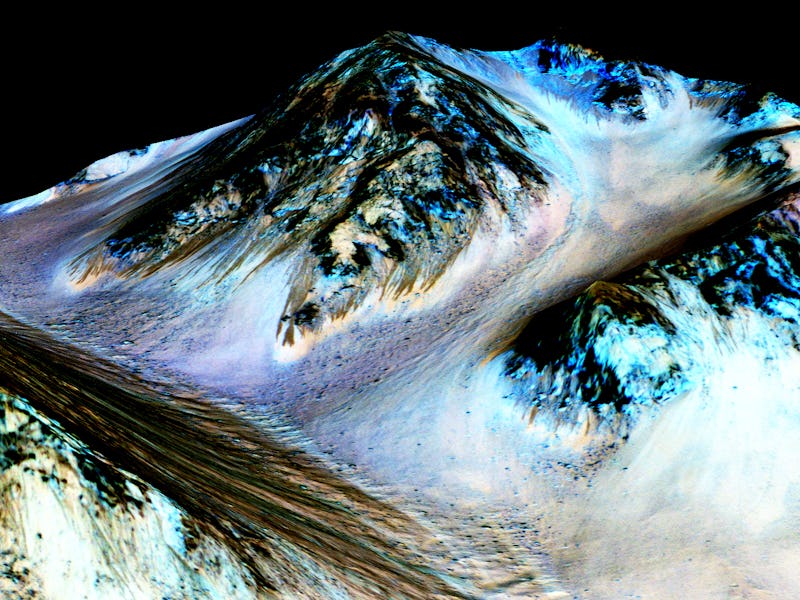NASA Finds Volcanic Evidence for More Water on Mars
Volcanoes erupted from beneath ice far, far away from where we thought all the ice was.

An “extensive” ice sheet must once have existed on ancient Mars, scientists have learned.
NASA’s Jet Propulsion Laboratory has determined that certain volcanoes erupted beneath the ice on Mars far, far away from anywhere an ice sheet currently exists.
The Mars Reconnaissance Orbiter packs a device known as the Compact Reconnaissance Imaging Spectrometer for Mars, active since 2006, which is capable of the high-resolution imaging needed to make a discovery like this. The CRISM searched for what according to NASA are the usual suspects when a volcano erupts from underneath an ice sheet: zeolites, sulfates, and clays. All of which it found in southern Mars’ Sisyphi Montes region, up to 1,000 miles from the southern polar ice cap where you’d expect Mars’ water to be.
The more we learn about the configuration of water on Mars — past and present — the closer we get to understanding what microbial life might possibly exist, or have existed, on its surface.
These are the areas where volcanoes erupted beneath the ice on Mars
The idea of water on Mars has captivated us since the early 1970s, when the first possible evidence of water on long-ago Mars trickled in from Mariner 9 and the Viking orbiter. Mars’ polar ice caps are massive, but they’re not entirely water — the larger, northern cap’s permanent bulk (the sizes of the caps change seasonally) is water ice, while the southern cap is thought to be a mixture of water and carbon dioxide.
In 2015, NASA announced the strongest evidence to date that water — actual liquid water, not just ice — flows on Mars today, not just long ago. Like the new discovery of subglacial volcanic eruptions far away from the current ice sheets, this find hinged on analysis of minerals, which often leave striations in the surface and help to date the movement of Mars’ water over time.